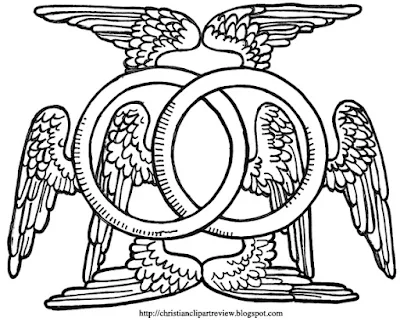Key signifies power and trust committed. It denotes power either to stop the action or to exert it, according to the circumstances.
So the keys of the kingdom of heaven, signify the power to admit into that state, and to confer the graces and benefits thereof. In Luke 52 the key of knowledge, signifies the power of attaining to knowledge, the means of getting knowledge; and, according to the same analogy, to open the Scriptures, in Luke 32, is to show the true meaning of them, whereby others may understand them. Son in Isaiah 22, the keys of David, signify the power to rule; and so the Targum hath there dominium.
Keys in the book of Revelation are the symbols of Christ's power over Hades, the place of separate spirits, and the grave. Hence Christ saith, in Matthew that the gates of Hades, i. e. death, shall not prevail against his church.
Scripture References for Key(s) Chrismons:
- "And I will give unto thee the keys of the kingdom of heaven: and whatsoever thou shalt bind on earth shall be bound in heaven: and whatsoever thou shalt loose on earth shall be loosed in heaven." Matthew 16:19
- "I am he that liveth, and was dead; and, behold, I am alive for evermore, Amen; and have the keys of hell and of death." Revelation 1:18
- "And the fifth angel sounded, and I saw a star fall from heaven unto the earth: and to him was given the key of the bottomless pit." Revelation 9:1
- "And the key of the house of David will I lay upon his shoulder; so he shall open, and none shall shut; and he shall shut, and none shall open." Isaiah 22:22
 |
| A door lock symbol decorated with grape leaves, fruit and vines. |















































